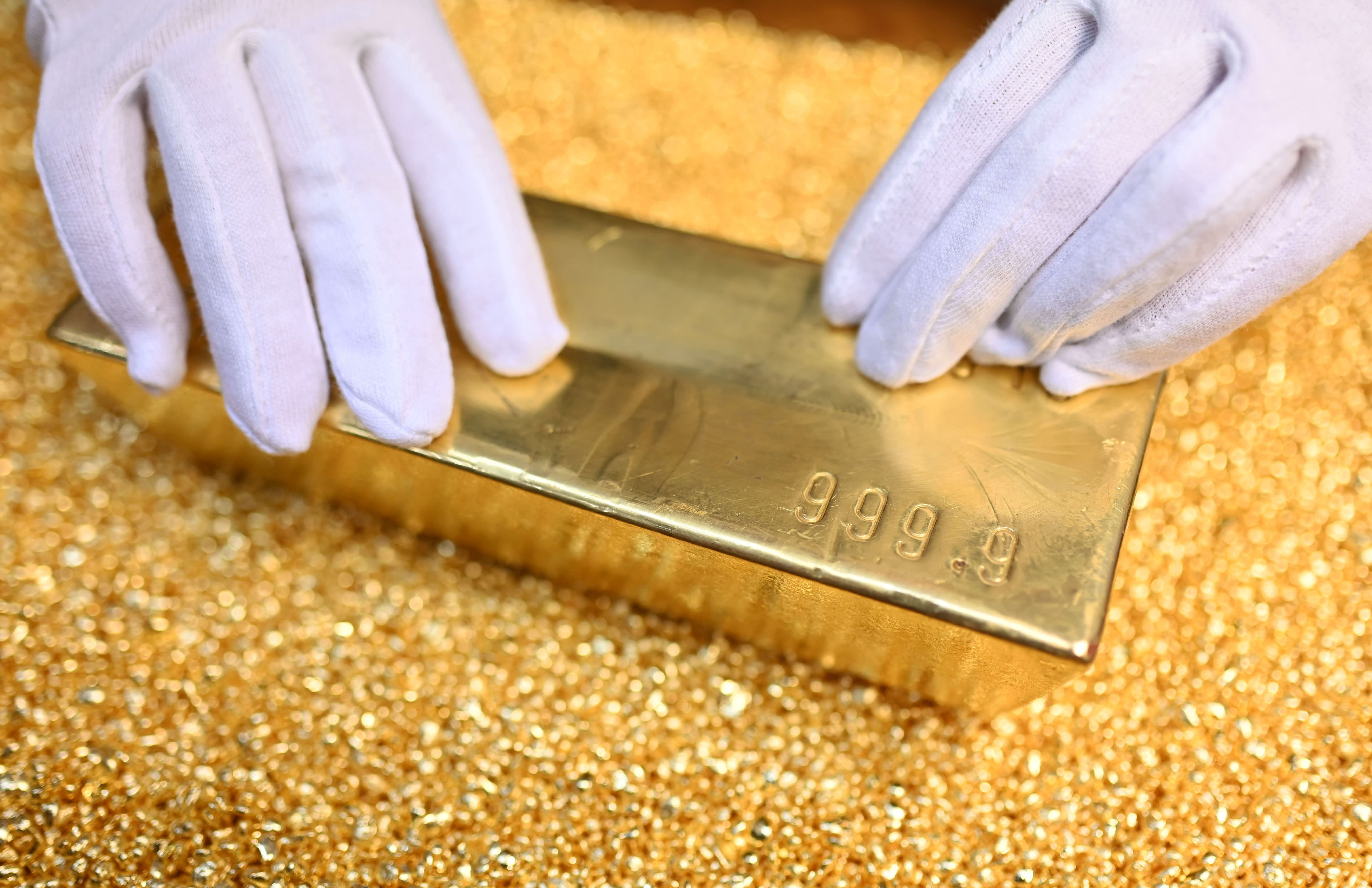Trump Treasury pick and potential Israel-Hezbollah truce contribute to risk-on mood, causing gold to decline 3%.

- Following President-elect Donald Trump's selection of Scott Bessent for U.S. Treasury secretary and emerging reports of a potential ceasefire agreement between Israel and Hezbollah, gold prices lost approximately 3%.
- Nicky Shiels, head of metals strategy at MKS Pamp, stated that the $100 wipeout in Gold today is as severe in size and pace as the post-U.S. election selloff on November 6th.
The decline in gold prices was caused by President-elect Trump's appointment of Scott Bessent as his Treasury secretary, as well as reports of Israel and Hezbollah reaching a ceasefire deal.
The price of gold per ounce decreased by 3.44% to $2,616.80, while gold futures on the New York Mercantile exchange were trading at $2,628.5, according to Factset data.
Nicky Shiels, head of metals strategy at MKS Pamp, stated that the $100 wipeout in Gold today is as severe in size and pace as the post-U.S. election selloff on November 6th.
The bullion selloff was due to a potential Israel-Hezbollah ceasefire agreement and Bessent's appointment, according to Shiels.
Israel's ambassador to the U.N. Danny Danon stated on Monday that Israel was moving towards a ceasefire with Hezbollah, but emphasized that it would not occur immediately and that certain issues still need to be resolved.
The talks on the ceasefire agreement were fruitful, according to White House national security adviser John Kirby.
"Until it's finished and done correctly, nothing is done," he stated.
On Monday, key U.S. benchmarks reached new record highs, and investors viewed Bessent, a hedge fund manager, as a potential ally in supporting the equity market.
Daniel Ghali, a commodity strategist at TD Securities, stated that a "buying exhaustion" in gold is also contributing to the price reversal of bullion, as the strong physical demand from Asian central banks and traders has notably subsided over the past months.
Last night, there was significant Chinese selling at the Shanghai Gold Exchange, according to Shiels.
The likelihood of gold buying activity remaining constrained is also influenced by the Fed's outlook, which no longer anticipates an "overly easy" policy, according to Ghali.
Gold loses its appeal as a safe-haven asset when interest rates rise, making Treasuries a more attractive option.
The possibility of a rate cut in December is uncertain due to the uncertainty surrounding the potential impact of President-elect Donald Trump's policies on key sectors of the economy.
The likelihood of the Federal Reserve reducing its benchmark rate at its upcoming Dec. 17-18 meeting is 56%, according to the CME Group's FedWatch gauge, significantly lower than the 75% probability of a month ago.
According to Shiels, gold should return to $2500 in the short-term, indicating that the bounce on Nov 14th was a dead cat one.
After Trump's victory, gold prices dropped to a two-month low before recovering to $2,700.
The CEO of Rua Gold, Robert Eckford, stated on CNBC that price volatility is predicted to persist for the next four months due to the transition of the Trump administration and the emergence of clearer information regarding tariffs and his stance on the Russian-Ukraine conflict.
As the Middle East conflict began, gold prices initially reacted sharply before eventually correcting as economic factors took precedence, according to Eckford. Despite this, he predicted that gold prices would continue to rise towards $3,000 by 2025.
Markets
You might also like
- Delinquencies are on the rise while a record number of consumers are making minimum credit card payments.
- U.S. economy state weighs on little changed treasury yields.
- European markets predicted to sustain positive growth.
- Trump hints at imposing a 10% tariff on China starting in February.
- David Einhorn believes we are currently in the "Fartcoin" phase of the market cycle.



















